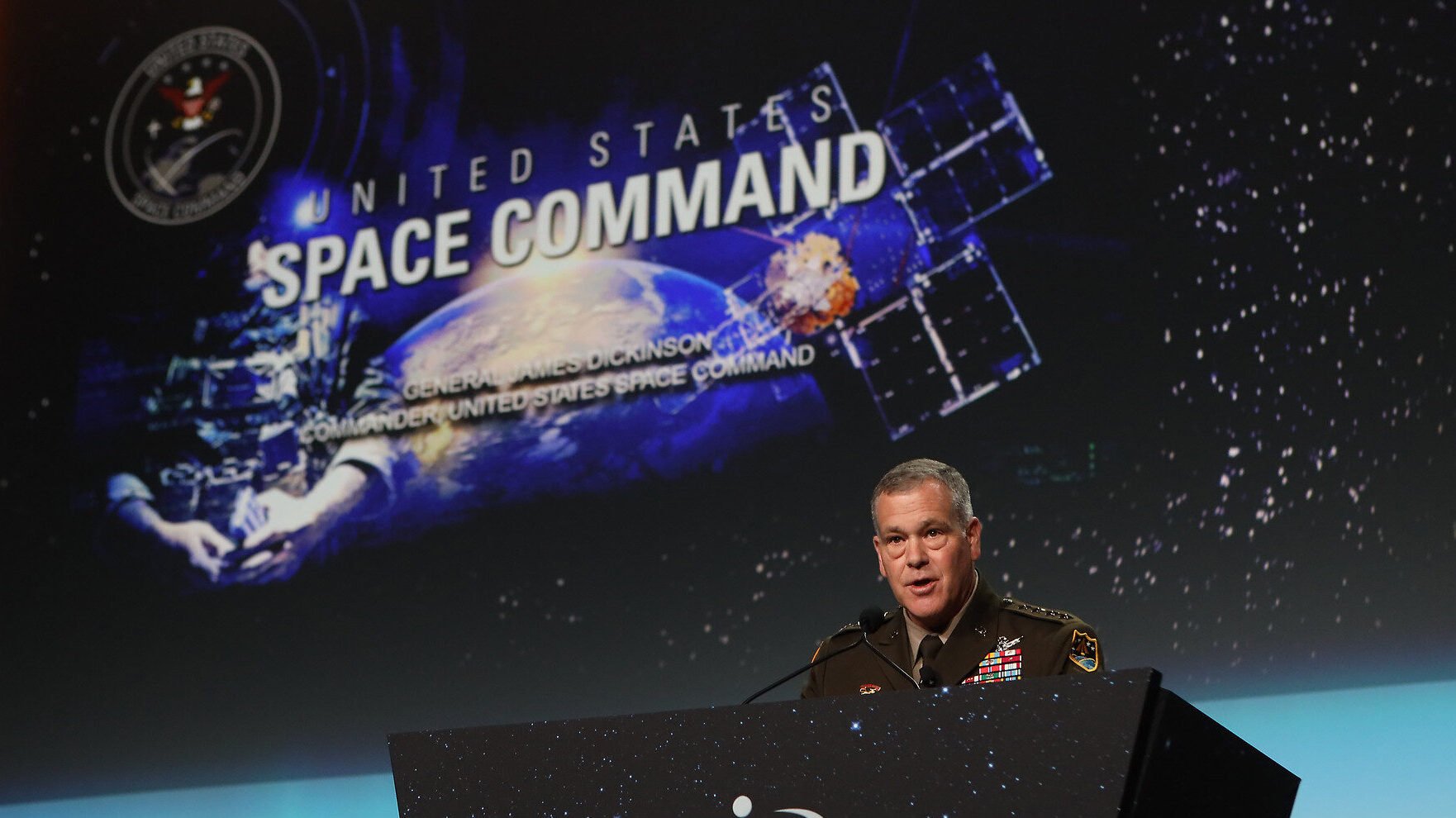
Gen. James H. Dickinson, Commander, US SPACECOM, speaks at the 2022 Space Symposium. (Credit: Space Foundation)
SPACE SYMPOSIUM — US Space Command has provided the services with its “initial” requirements for four key mission areas for joint space operations, including “space combat power,” Gen. Jim Dickinson, SPACECOM leader, said today.
“We’ve had a lot of success in the command in doing that formal process of creating initial capability documents … and getting those into the department’s process for satisfying requirements that we have in the US Space Command,” Dickinson said during the Space Foundation’s annual Space Symposium in Colorado Springs.
“We have four of those right now, and are working towards more of those. One is in space domain awareness … space combat power, joint space C2 [command and control] and the joint space communications layer. And so these are critical, because in order to get the funding, in order for the services to provide capabilities to us, they need to understand what our requirements are,” he said.
Satellite communications, Dickinson noted, has become a priority for SPACECOM as part of its space “assurance mission” for NATO allies and international partners in the Ukraine war.
“The command has prioritized many different assets, in particular, satellite communications, where we provided more than an additional gigabyte of data to support communications across the European continent. And since the beginning of the conflict, US Space Command has also provided more than 11,000 indications and warnings of theater launches to NATO allies, as well as our US partners,” he said.
SPACECOM also continues to move aggressively to strengthen cooperation with allies and international partners, Dickinson said in his wide-ranging remarks on the command’s three first years.
“Today, we have 169 space situational awareness sharing agreements … that is a phenomenal number, 169, and growing. Of the 169, we have 33 nations and international organizations, 129 commercial companies, plus seven universities,” Dickinson said.
Further, SPACECOM has signed “enhanced space cooperation” memorandums of understanding with the United Kingdom and Canada, he said.
And this week, Dickinson added, “we’ll sign one of those enhanced space cooperation MOUs with Australia, and we look forward to doing that.”
Finally, looking to the future, Dickinson stressed SPACECOM’s effort to flesh out a concept for being able to undertake “dynamic space operations” on orbit “on a sustainable basis.”
SPACECOM Deputy Commander Gen. John Shaw, in a February speech at the Space Force’s first-ever Space Mobility Conference, defined dynamic space operations as “missions and platforms that are not Earth-facing and … in order to do their missions best are not necessarily staying static in their orbits.”
In other words, operations that require satellites and spacecraft to (relatively) rapidly and efficiently maneuver within and among orbital planes.
The issue, Dickinson said, is “how do we ensure that our satellites … are not constrained by some of the limited resources that we currently have up on satellites?” Examples of those resources are battery life and fuel, he explained.
“But it’s important, as we do in other domains with respect to operations, that we don’t limit ourselves by [a lack of] those types of resources,” Dickinson said.






















